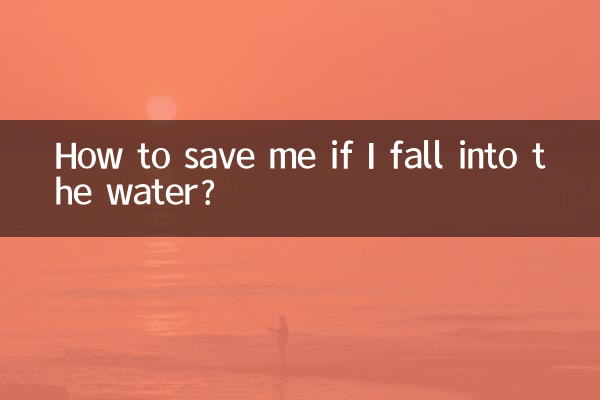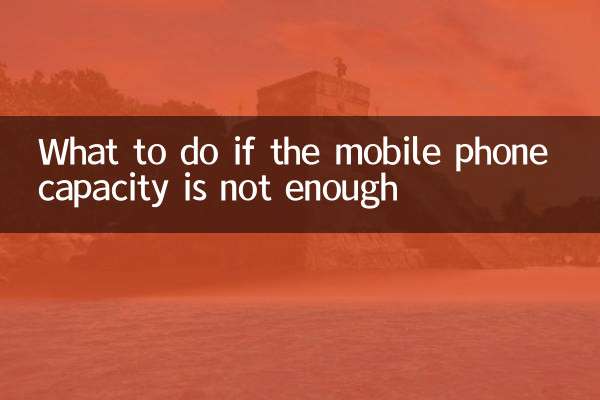How to save me if I fall into the water? ——Comprehensive analysis of drowning self-rescue and rescue methods
Recently, heavy rains, floods or swimming accidents have occurred frequently in many places, and "drowning rescue" has become a hot topic on the Internet. This article will combine the hot events and authoritative data of the past 10 days to present scientific self-rescue and rescue methods in a structured manner.
1. Statistics on hot topics related to drowning in the entire network in the past 10 days

| Date | hot events | Number of discussions (10,000) |
|---|---|---|
| July 15 | Heavy rain in Beijing causes two people to fall into the water and die | 48.7 |
| July 18 | Tourists were washed away by the Yangtze River in Chongqing | 62.3 |
| July 20 | #What to do if the swimming ring suddenly leaks# Topic | 135.2 |
| July 22 | Firefighters demonstrate the correct way to throw a lifebuoy | 89.5 |
2. Self-rescue methods in different scenarios
| scene | Self-rescue steps | Key takeaways |
|---|---|---|
| calm waters | 1. Maintain the upward floating position 2. Breathe with your mouth and nose exposed to the water 3. Move slowly towards the shore | Save energy and avoid struggling |
| in rapids | 1.Legs facing downstream 2. Protect your head with your hands 3. Find fixtures | Never swim against the current |
| vehicle falling into water | 1.Broken windows take priority over opening doors 2. Use the metal rod of the headrest 3. Wait for internal and external pressure to balance | Golden escape time 90 seconds |
3. Four major principles of scientific rescue
According to the latest guidelines from the International Life Saving Federation (ILS):
1.call priority: Call the emergency hotline immediately and clearly inform them of the location and number of people who fell into the water.
2.indirect rescue:
| Tools | Effective distance | How to use |
|---|---|---|
| lifebuoy | 10-15 meters | Throw the drowning person upstream |
| long pole | 3-5 meters | Inserted obliquely into water for fixation |
| floating rope | 20 meters | Knotted for easy grip |
3.direct rescue: Professionals only, need to be equipped with a life-saving buoyancy device
4.cardiopulmonary resuscitation: Check your breathing immediately after landing, and perform chest compressions and artificial respiration at a ratio of 30:2
4. Common misunderstandings and truths
| Misunderstanding | truth | Data support |
|---|---|---|
| "If you can swim, you won't drown." | 80% of drowning people can swim | WHO2023 report |
| "Drowning will scream for help" | Most struggle silently | US CDC research |
| "Shallow water means safety" | 20cm water depth can be fatal | Data from the Ministry of Emergency Management of China |
5. Precautions for special groups of people
1.children: Danger may occur at a water depth of 5cm, and guardians need to maintain "arm's length" supervision
2.elderly: Avoid activities alone on water-friendly platforms. Sudden illness may easily lead to falling into the water.
3.Disabled people: It is recommended to wear a life jacket with eye-catching logos and choose barrier-free waters
6. List of preventive measures
• Avoid drinking alcohol before swimming, as alcohol reduces your ability to regulate body temperature
• Get out of the water immediately during thunderstorms, as the water surface is vulnerable to lightning strikes
• Learn self-rescue postures such as "jellyfish float"
• Carry a waterproof bag for your mobile phone, which can be used for lighting and positioning in emergencies
According to the latest data from the National Health Commission, about 57,000 people die from drowning in my country every year, of which 63% occur in summer. Mastering the correct rescue knowledge can not only protect yourself but also save the lives of others. When encountering danger, please remember:Protect yourself and save others, be both wise and brave.

check the details

check the details